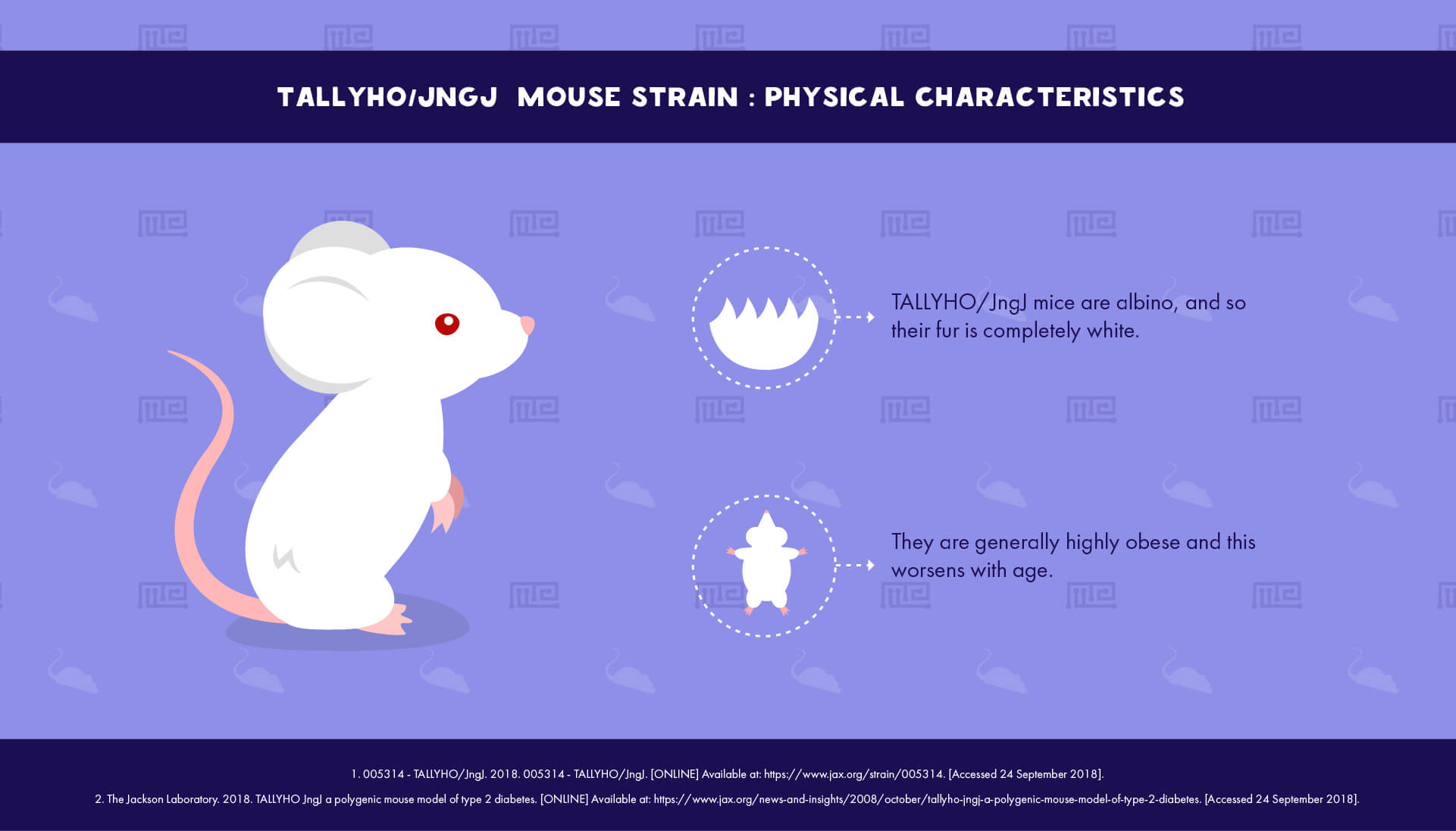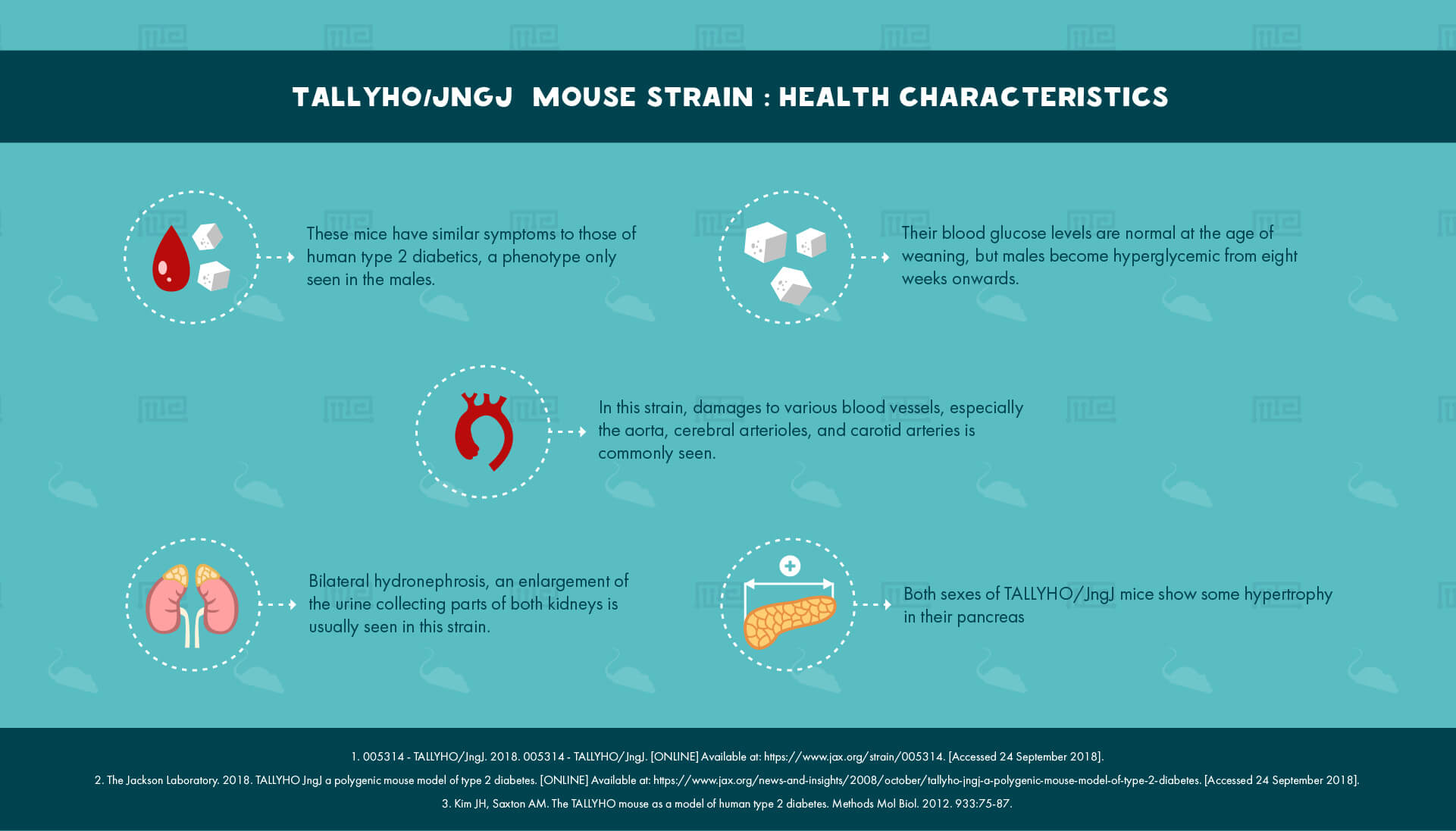Overview
The TALLYHO/JngJ mouse, also known as the TH mouse, is an inbred strain of mouse model that exhibits symptoms very similar to diabetes mellitus type 2 in humans.[1]
History
The TALLYHO/JngJ strain was developed in the early 1990s from mice kept by E. Simpson at Harrow in the UK. Simpson noticed that some of his Theiler Original mice were displaying polyuria (frequent urination) and glucosuria (excessive glucose in the urine).
Dr. Juergen Naggert established the TALLYHO/JngJ mice at the Jackson Laboratory in 1994. The mice were selectively inbred for hyperglycemia for seven generations, before being backbred and crossbred to produce the final form of the strain.[1][2]
Behavioral Characteristics & Handling
Experimental reports on the behavior of this strain could not be found. Given its severe obesity, however, there are several behavioral paradigms for which a TALLYHO/JngJ mouse is unlikely to be suitable. In the rotarod test, for example, it is probable that such an obese mouse would experience great difficulty. Similar speculations could be made about the forced swim test and open field.
Detailed information on the handling of TALLYHO/JngJ mice could not be found either. Hence, researchers who require a highly docile strain might wish to exercise caution by choosing a strain for which reliable docility has been experimentally demonstrated.
Health Characteristics
The most notable health characteristic of these mice is the similarity of their symptoms to those of human type 2 diabetics.[3] This phenotype is only seen in males.[1]
Their blood glucose levels are normal at the age of weaning, but males become hyperglycemic from eight weeks onwards. This phenotype is associated with several Tanidd loci on various chromosomes, particularly the Tanidd1 locus on chromosome 19.[2]
Blood insulin and triglyceride levels are also high with the TALLYHO/JngJ mice, with the pancreas showing some hypertrophy in both sexes. In males, histological examination also shows microscopic abnormalities in the pancreas, including vacuole formation, islet atrophy, and beta cell degranulation.
Other common pathologies seen with these mice include bilateral hydronephrosis (enlargement of the urine collecting parts of both kidneys), and damage to various blood vessels, especially the aorta, cerebral arterioles, and carotid arteries.[1][2]
Major Experimental Uses
As detailed above, the primary interest in the TALLHO/JngJ mice lies with the males’ use as a model for type 2 diabetes mellitus. Researchers comment favorably on the high fidelity with which these mice resemble the typical symptoms of this disease in humans.[3] Female mice of this strain can also be employed for research into hyperglycemia and hyperinsulinemia.[1]
No other major experimental uses of this strain have been detailed. Again, it is highly improbable that this strain could serve as a suitable model in many frequently used kinds of behavioral experiments, given how its extreme obesity would be expected to adversely affect its mobility.
References
- 005314 – TALLYHO/JngJ. 2018. 005314 – TALLYHO/JngJ. [ONLINE] Available at: https://www.jax.org/strain/005314. [Accessed 24 September 2018].
- The Jackson Laboratory. 2018. TALLYHO JngJ a polygenic mouse model of type 2 diabetes. [ONLINE] Available at: https://www.jax.org/news-and-insights/2008/october/tallyho-jngj-a-polygenic-mouse-model-of-type-2-diabetes. [Accessed 24 September 2018].
- Kim JH, Saxton AM. The TALLYHO mouse as a model of human type 2 diabetes. Methods Mol Biol. 2012. 933:75-87.


